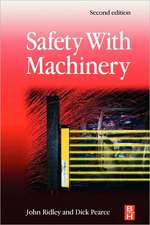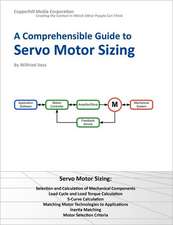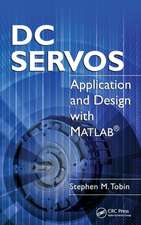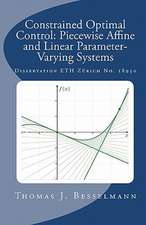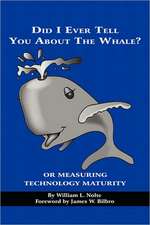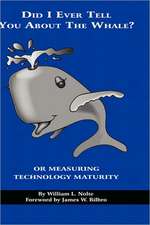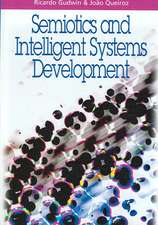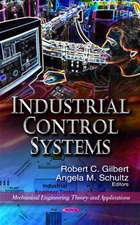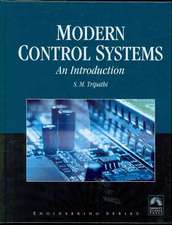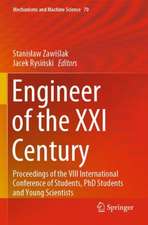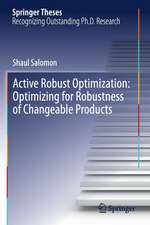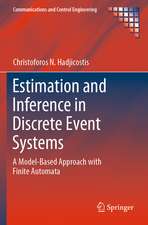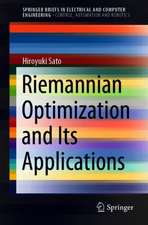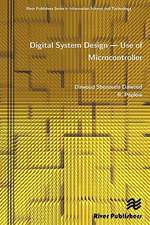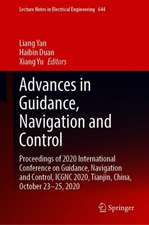Fault Detection and Diagnosis in Industrial Systems: Advanced Textbooks in Control and Signal Processing
Autor L.H. Chiang, E.L. Russell, R.D. Braatzen Limba Engleză Paperback – 11 dec 2000
The goal of the book is to present the theoretical background and practical techniques for data-driven process monitoring. Process monitoring techniques presented include: Data-driven methods - principal component analysis, Fisher discriminant analysis, partial least squares and canonical variate analysis; Analytical Methods - parameter estimation, observer-based methods and parity relations; Knowledge-based methods - causal analysis, expert systems and pattern recognition.
The text demonstrates the application of all of the data-driven process monitoring techniques to the Tennessee Eastman plant simulator - demonstrating the strengths and weaknesses of each approach in detail. This aids the reader in selecting the right method for his process application. Plant simulator and homework problems in which students apply the process monitoring techniques to a non-trivial simulated process, and can compare their performance with that obtained in the case studies in the text are included. A number of additional homework problems encourage the reader to implement and obtain a deeper understanding of the techniques. The reader will obtain a background in data-driven techniques for fault detection and diagnosis, including the ability to implement the techniques and to know how to select the right technique for a particular application.
Din seria Advanced Textbooks in Control and Signal Processing
- 15%
 Preț: 496.70 lei
Preț: 496.70 lei - 15%
 Preț: 633.89 lei
Preț: 633.89 lei -
 Preț: 231.73 lei
Preț: 231.73 lei - 19%
 Preț: 575.17 lei
Preț: 575.17 lei - 15%
 Preț: 570.54 lei
Preț: 570.54 lei - 17%
 Preț: 541.09 lei
Preț: 541.09 lei - 15%
 Preț: 482.92 lei
Preț: 482.92 lei -
 Preț: 378.95 lei
Preț: 378.95 lei -
 Preț: 379.31 lei
Preț: 379.31 lei - 15%
 Preț: 559.87 lei
Preț: 559.87 lei -
 Preț: 388.22 lei
Preț: 388.22 lei - 15%
 Preț: 627.31 lei
Preț: 627.31 lei -
 Preț: 380.99 lei
Preț: 380.99 lei -
 Preț: 381.34 lei
Preț: 381.34 lei - 15%
 Preț: 486.38 lei
Preț: 486.38 lei - 19%
 Preț: 610.89 lei
Preț: 610.89 lei - 20%
 Preț: 321.03 lei
Preț: 321.03 lei -
 Preț: 386.74 lei
Preț: 386.74 lei - 15%
 Preț: 641.24 lei
Preț: 641.24 lei - 15%
 Preț: 482.92 lei
Preț: 482.92 lei - 15%
 Preț: 632.63 lei
Preț: 632.63 lei - 15%
 Preț: 570.10 lei
Preț: 570.10 lei -
 Preț: 377.84 lei
Preț: 377.84 lei - 23%
 Preț: 724.23 lei
Preț: 724.23 lei - 19%
 Preț: 514.32 lei
Preț: 514.32 lei - 19%
 Preț: 579.14 lei
Preț: 579.14 lei - 15%
 Preț: 683.89 lei
Preț: 683.89 lei - 19%
 Preț: 547.30 lei
Preț: 547.30 lei - 15%
 Preț: 456.60 lei
Preț: 456.60 lei -
 Preț: 377.12 lei
Preț: 377.12 lei - 15%
 Preț: 511.60 lei
Preț: 511.60 lei - 15%
 Preț: 487.00 lei
Preț: 487.00 lei - 15%
 Preț: 574.00 lei
Preț: 574.00 lei
Preț: 480.09 lei
Preț vechi: 564.80 lei
-15% Nou
Puncte Express: 720
Preț estimativ în valută:
84.96€ • 99.07$ • 74.59£
84.96€ • 99.07$ • 74.59£
Carte tipărită la comandă
Livrare economică 15-29 ianuarie 26
Preluare comenzi: 021 569.72.76
Specificații
ISBN-13: 9781852333270
ISBN-10: 1852333278
Pagini: 296
Ilustrații: XIV, 279 p. 5 illus.
Dimensiuni: 155 x 235 x 16 mm
Greutate: 0.42 kg
Ediția:Softcover reprint of the original 1st ed. 2001
Editura: SPRINGER LONDON
Colecția Springer
Seria Advanced Textbooks in Control and Signal Processing
Locul publicării:London, United Kingdom
ISBN-10: 1852333278
Pagini: 296
Ilustrații: XIV, 279 p. 5 illus.
Dimensiuni: 155 x 235 x 16 mm
Greutate: 0.42 kg
Ediția:Softcover reprint of the original 1st ed. 2001
Editura: SPRINGER LONDON
Colecția Springer
Seria Advanced Textbooks in Control and Signal Processing
Locul publicării:London, United Kingdom
Public țintă
Professional/practitionerCuprins
I. Introduction.- 1. Introduction.- II. Background.- 2. Multivariate Statistics.- 3. Pattern Classification.- III. Data-driven Methods.- 4. Principal Component Analysis.- 5. Fisher Discriminant Analysis.- 6. Partial Least Squares.- 7. Canonical Variate Analysis.- IV. Application.- 8. Tennessee Eastman Process.- 9. Application Description.- 10. Results and Discussion.- V. Analytical and Knowledge-based Methods.- 11. Analytical Methods.- 12. Knowledge-based Methods.- References.
Caracteristici
Covers a variety of data-driven process monitoring techniques Includes detailed applications in chemical plant simulation Expanded text with more homework problems and graphically-illustrated examples

